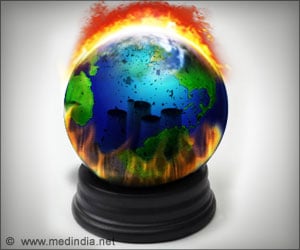The International Energy Agency (IEA) has said that climate change to avert a global warming disaster is possible, but it would require profound transformation of the energy sector.
The International Energy Agency (IEA) has said that climate change to avert a global warming disaster is possible, but it would require profound transformation of the energy sector. And the time to act is now.
World leaders gathering in Copenhagen next month for the UN Climate summit have a historic opportunity to avert the worst effects of climate change, said Nobuo Tanaka, Executive Director of the International Energy Agency in London at the launch of the World Energy Outlook 2009 a few days ago.The longer we wait, the more difficult and expensive it becomes to achieve the greater and greater cuts that are necessary to keep worldwide temperature rise to 2 degrees Centigrade or a 3.8 degrees Fahrenheit global average.
2 C is the least we can realistically hope and aim for now. This would be less disastrous than the 4 C or the completely catastrophic 6 C (10.8 F) average worldwide temperature rise we would headed for under a business-as-usual continuation of current overall trends in carbon emissions, the agency has warned.
The agency has estimated that to keep us within sight of a global average temperature rise of 2 C it will take $10 trillion in investment in renewable energy from now till 2030.
Every year of delay before switching to a 2 C emissions goal adds another $500 billion to that $10 trillion total global investment cost, the IEA study finds. In other words, the longer we put off a serious switch to renewable energy and efficiency, in the form of tough legislation; the more expensive it will be to fund the change.
The 450 Scenario, projected by the IEA, sets out an aggressive timetable of actions needed to limit the long-term concentration of greenhouse gases in the atmosphere to 450 parts per million of carbon-dioxide equivalent and keep the global temperature rise to around 2°C above pre-industrial levels.
To achieve this scenario, fossil-fuel demand would need to peak by 2020 and energy-related carbon dioxide emissions to fall to 26.4 gigatonnes in 2030 from 28.8 Gt in 2007
Advertisement
“At the IEA Ministerial meeting, a large majority of Ministers showed their intention to take the lead, organise themselves and commit to the challenge to reach the 450 Scenario - the energy path of Green Growth. Only by mitigation action in all sectors and regions can we turn the 450 Scenario into reality,” stressed Mr. Tanaka.
Advertisement
The recent rapid development of unconventional gas resources – notably shale gas – in North America has transformed the gas-market outlook. “Unconventional gas is unquestionably a game-changer in North America with potentially significant implications for the rest of the world,” said Mr. Tanaka. The share of unconventional gas in total US gas output jumped from 44% in 2005 to around 50% in 2008 and, in the Reference Scenario, is projected to rise to almost 60% in 2030. The boom in North American unconventional gas production, together with the recession’s impact on demand, is expected to prolong the glut of gas supply for the next few years. The analysis of WEO-2009 shows that the annual under-utilisation of inter-regional pipeline and LNG capacity could rise from around 60 billion cubic metres in 2007 to 200 bcm by 2015. This glut could have far-reaching consequences for the structure of gas markets, with suppliers to Europe and Asia-Pacific coming under pressure to modify pricing terms under long-term contracts, to de-link gas prices from oil prices, sell more gas on a spot basis and to cut prices to stimulate demand.
WEO-2009 identifies higher oil prices, coupled with the downturn in oil sector investment, as a serious threat to the world economy, just as it is beginning to recover. As a result of the financial crisis, investment in upstream oil and gas has already been cut by over $90 billion this year compared with 2008. While oil demand has dropped sharply, in the Reference Scenario it starts recovering in 2010, reaching 88 mb/d in 2015 and then 105 mb/d in 2030.
“Calling for increased investment in fossil-fuel supply is not inconsistent with the need to move to a low-carbon energy pathway,” stressed Mr. Tanaka. “Even in the 450 Scenario, OPEC production still increases substantially in the period to 2030, boosting those countries’ revenues in real terms to four times their level of the previous 23 years,” he added.
“WEO-2009 provides both a caution and grounds for optimism. Caution, because a continuation of current trends in energy use puts the world on track for a rise in temperature of up to 6°C and poses serious threats to global energy security. Optimism, because there are cost-effective solutions to avoid severe climate change while also enhancing energy security – and these are within reach as the new Outlook shows,” added Mr. Tanaka.
WEO-2009 also provides a focus on Southeast Asia in recognition of its growing influence on energy markets. In the Reference Scenario, Southeast Asia’s energy demand expands by 76% in 2007-2030. “Coupled with strong growth in China and India, this robust demand in Southeast Asia is refocusing the global energy landscape increasingly towards Asia,“ stated Mr. Tanaka.
Source-Medindia
GPL









